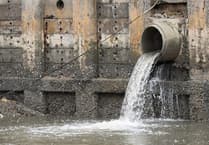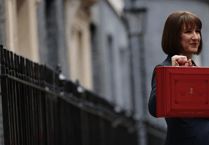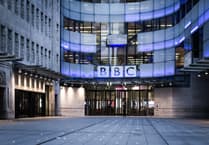I like magpies. Suggesting themselves as nature’s police force with kick-butt attitude and blue stripes on each sleeve, writes Gareth James. However, a decades-long open season on magpies has contributed to significant population decline in Wales and in all likelihood the species will shortly be Amber listed. So, I was delighted to see these intelligent corvids removed from the general licence and from July 1st, along with jackdaws and jays, should no longer be shot in Wales for general conservation purposes.
But the magpie reprieve is not universally endorsed. Steve Griffiths, the British Association for Shooting and Conservation Wales director, in unlikely and squeamish pitch, protested that, ‘magpies, jays and jackdaws are well-documented predators of eggs and chicks!’.
This regularly rolled out drivel that corvids should be shot ‘for the sake of songbirds’ is nauseatingly spurious. Corvids and songbirds have coexisting for tens of millions of years longer than we have been around, and there is no evidence that corvids, or any other predator, cause decline in bird species. Everyone with a head knows full well that human activities pose the most significant threats to those creatures that brighten our lives.
So, if we are serious about conservation, human activity is where our focus should stay. The use of pesticides, the destruction of habitat, the all-but-unregulated release of three million gamebirds into the Welsh countryside every year, heap infinitely more stress upon wildlife than magpies, jackdaws, and jays ever could.
Still more catastrophic for songbirds will likely be Highly Pathogenic Avian Influenza (HPAI). An avian flu variation emerging from poultry farms and now spreading fast into the wild-bird population. Around our coasts, great skuas, gannets, guillemots and terns are dying in their thousands. And in recent weeks, HPAI has been detected in species including, buzzards, swans, kestrels, geese, ducks, red kites, goshawks, blackbird, sparrowhawk, pigeon, peregrine falcon, pied wagtail, moorhen, owls, oystercatchers, and heron. Not only does HPAI pose significant risk to all vulnerable species, but from our point of view, each outbreak offers opportunities for the virus to spill over into the human population. And we know how that can go.
As for helping songbirds? I’m afraid that birdfeeder is not the conscience-cleanser you hoped it would be. Birdfeeders are not only efficient disease vectors, particularly dodgy during the current HPAI outbreaks, but birdfeeders also create dense prey targets that tilt an unnatural if local advantage towards predators such as sparrowhawks and red-clawed cats. But we don’t mind that, do we. It was those few hundred thousand pesky magpies we needed to deal with.
And your cat, that most unBritish predator. Cute when it ‘brings you a present’? Your feline friends slaughter around 100 million animals each year, of which 27 million are wild birds. Carnage that rarely raises an eyebrow.
Fear not, I am not suggesting an open season on cats nor banning fat-balls and sunflower seeds. But I am suggesting that we resist destroying animals for damage they are not responsible for. To stop concocting bogus reasons to eliminate wildlife we are not so fond of.
I appreciate crops need defending and there is an argument that, on occasion, a vulnerable species colony or important breeding site may need protecting from a specific community of predators (because human activities have wiped out the rest). However, Marine Conservation Zones, such as the area around Skomer, and genuine rewilding projects (like my garden), teach us that nature left to its own devices is the most efficient remedy for the mess humans leave behind. That the work of ‘wildlife management’ is principally to manage human activity. And that the ‘just kill the damn thing!’ solution is prudently reserved for the most exceptional cases.





Comments
This article has no comments yet. Be the first to leave a comment.